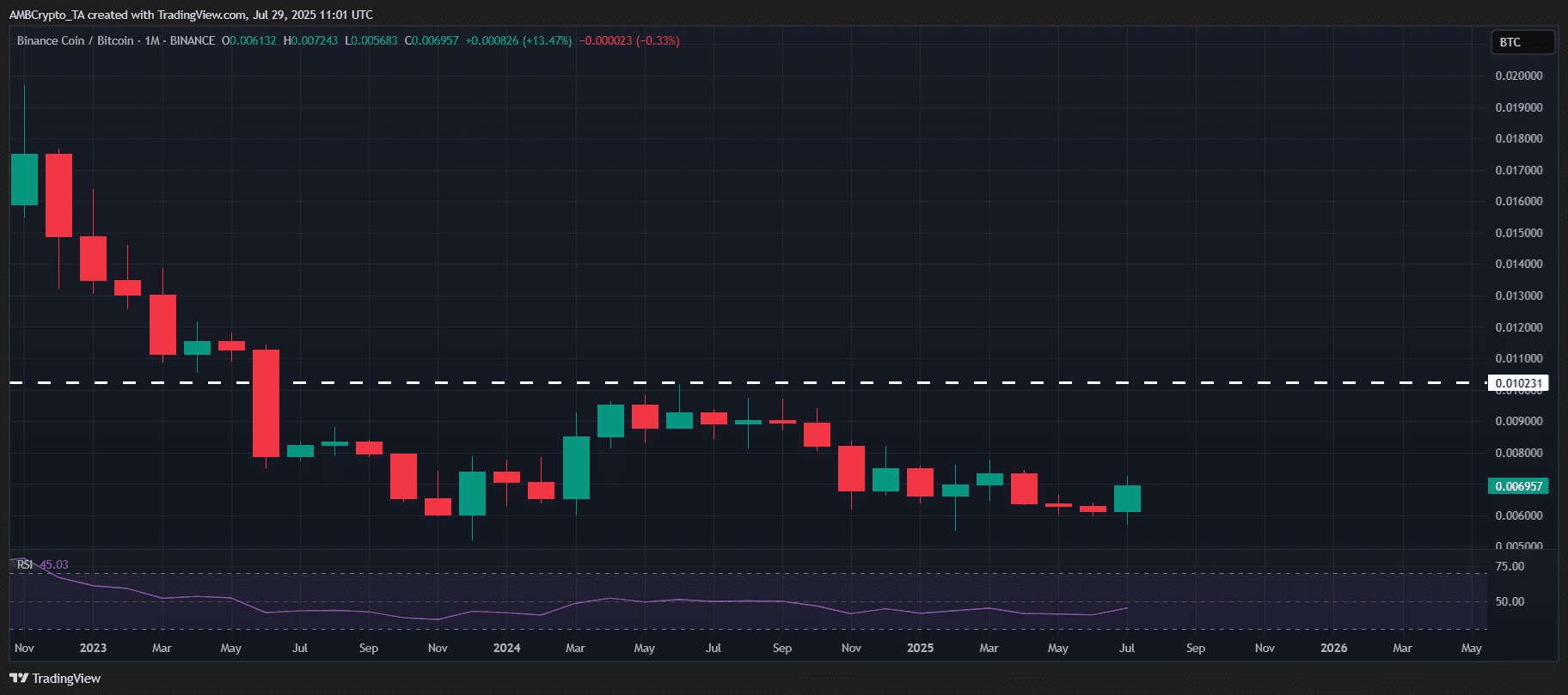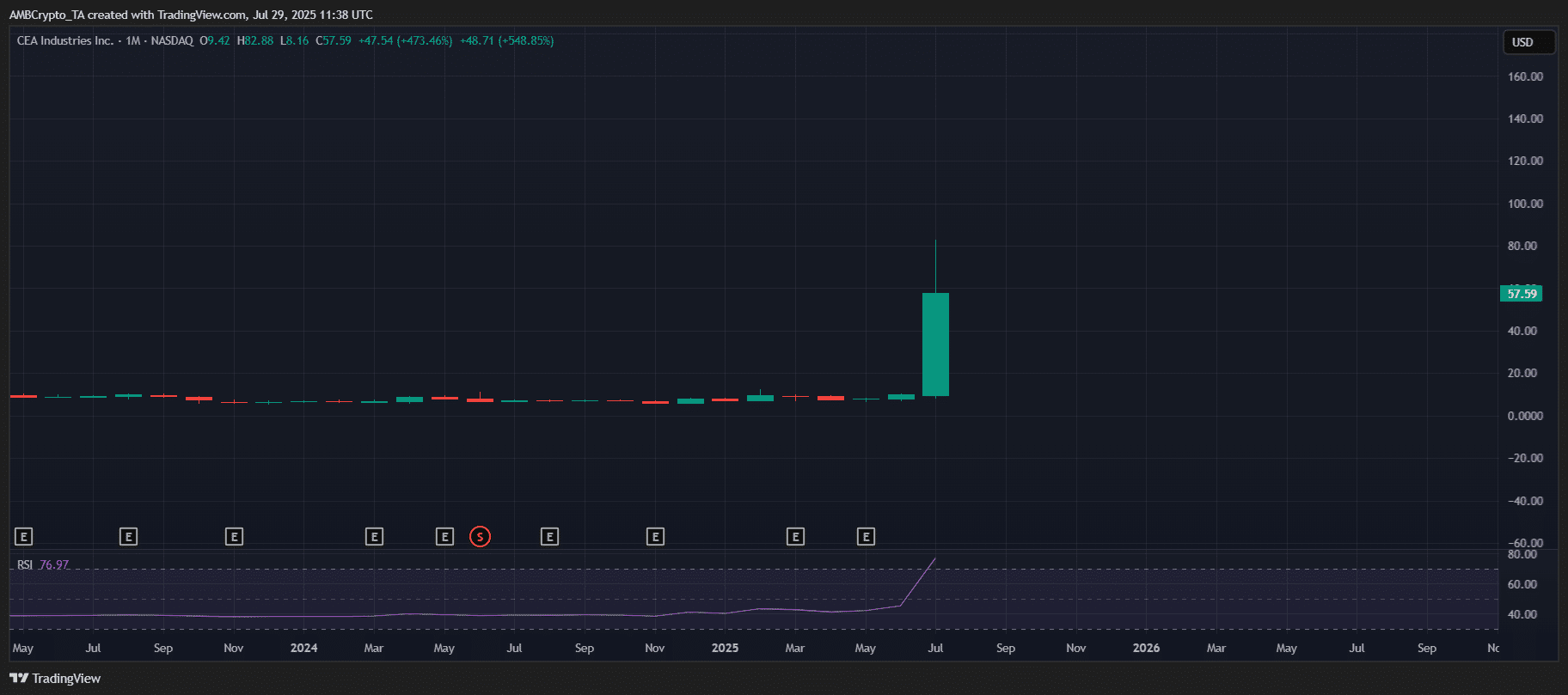In July this year, the increase in Binance Coin [BNB] may lag behind Ethereum [ETH] by over 50%, but it has not stagnated.
Binance Coin has set higher highs on the monthly chart, with the $861 wick indicating a clear bullish intention.
Meanwhile, the BNB/BTC ratio has only increased by 13%, while the ETH/BTC ratio has risen by 40%. This discrepancy highlights that BNB's momentum comes more from on-chain strength rather than high beta market liquidity.
 Several indicators reinforce this structural narrative.
Several indicators reinforce this structural narrative.
Since the Maxwell fork, Binance Chain's block time has been reduced from 1.5 seconds to 0.75 seconds. Its impact is evident: in the past three months, daily trading volume has surged by 142.8%, while Ethereum's increase has only been 24.3%.
With increased throughput, halved latency, and rapid growth in user activity, BNB seems to be steadily heading towards $1000. But does this also raise the bar for other high market cap cryptocurrencies?
VAPE launches as the first public treasury for BNB.
CEA Industries (NASDAQ: VAPE) is undergoing a significant transformation. The company has abandoned its e-cigarette business to become a $1.25 billion native financing platform for BNB.
For BNB, this is a huge shift, as it has long lacked the institutional packaging that Ethereum and Bitcoin [BTC] enjoy.
How did the market react? Sharp and decisive. As soon as the news broke, VAPE stocks soared over 550%. Clearly, this could mark the beginning of a new asset class narrative for Binance Coin.
 This is not just a one-time headline.
This is not just a one-time headline.
As Binance Coin reaches new highs, strengthens core infrastructure, and maintains stable on-chain speed, institutions are finally viewing it as a high-yield Layer 1 with true capital efficiency.
All these factors together drive BNB towards the $1000 milestone. Currently, the asset seems ready to lead the narrative of the next cycle, with structural positioning quietly surpassing most high market cap assets.


